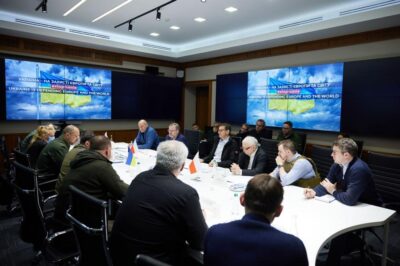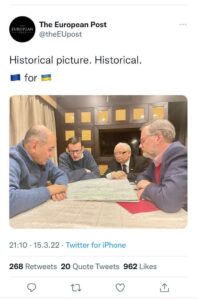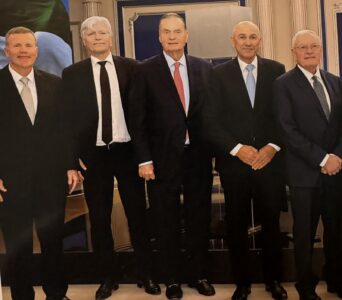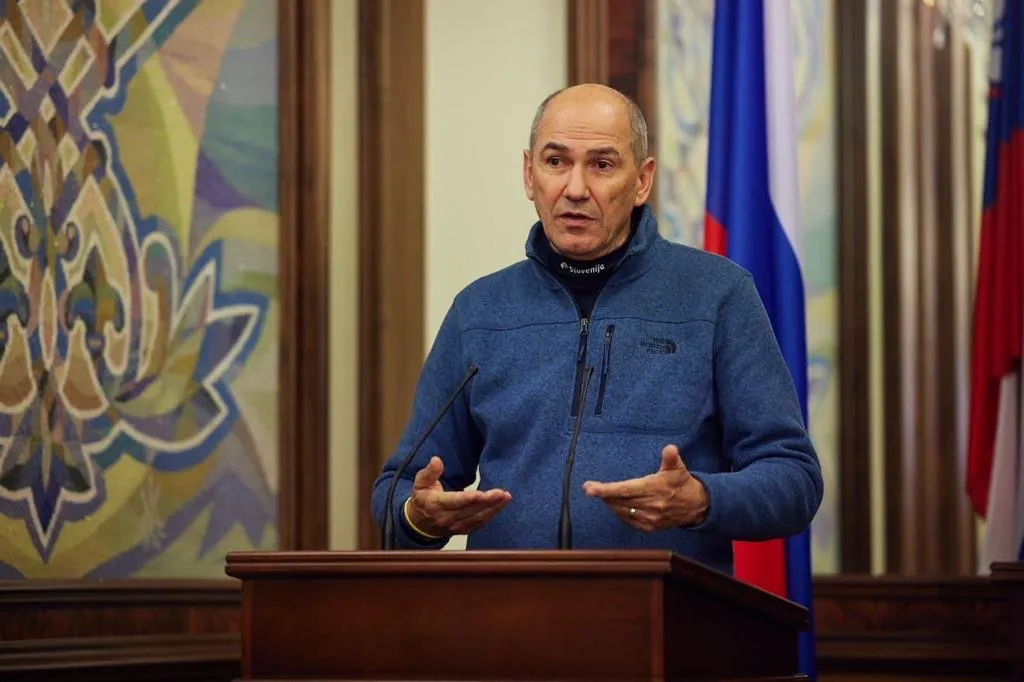Since February 2022, much of the world has been in a modern Cold War. Unlike the 20th-century Cold War, Europe is not its main stage or battlefield this time, even though a hot war is raging on its continent. The primary struggle for power is taking place between the U.S. and China. A glance at basic indicators such as the GDP of both countries and their military expenditures clearly proves this.
The Cold War of the 21st century is unfolding alongside a new technological revolution driven by artificial intelligence. Tools and weapons are emerging that even the best science fiction writers at the end of the last Cold War could not have imagined. Meanwhile, Western civilization is being eroded from within by the viruses of cultural Marxism—also known as the “woke” ideology—and consequently by catastrophically low birth rates. In contrast, its civilizational competitor in the form of totalitarian China, along with its vassals in North Korea, Moscow, Tehran, and numerous other countries, faces far fewer such problems.
Slovenia, as a European country, has found itself on the sidelines of this new Cold War, lacking significant power or influence within an already weak EU structure. With an incompetent, woke government and a president who flaunts feminist and rainbow foreign policies—whatever that may mean—Slovenia’s already weak voice has become practically inaudible. As the foreign minister correctly, albeit partially, described the consequences of Slovenia’s (in)actions: “We have become a dish on the table, to which we were not even invited.” However, Slovenia is not even the main course but merely part of the EU salad plate.
How Did We Get Here?
Had Donald Trump been elected U.S. President in 2020, Putin would not have invaded Ukraine in February 2022. Likewise, Iran would not have attacked Israel via Hamas in October 2023. The chaotic U.S. withdrawal from Afghanistan—which convinced Russia and China of the incompetence of leftist administrations in the U.S. and EU—would not have happened.

Instead, Beijing and Moscow watched daily as a weak President Biden stumbled, Europe’s defense capabilities dwindled, a U.S. admiral (a man) paraded in a skirt, incompetent foreign ministers declared empty feminist and “inclusive” foreign policies, and LGBT flags were raised on military ships. They realized that their time had come. Putin received the green light in Beijing for his aggression against Ukraine, along with all the necessary support, including military assistance from China’s vassal state, North Korea.

But these are retrospective analyses that cannot change the past. Trump now deals with the consequences of misguided policies he warned about in his first term. These consequences have altered the world, and what could have been prevented with a reasonable deterrence strategy is now much harder to correct, if not impossible.
What Can the U.S. President Do?
First, it is crucial to understand that President Trump is a man of action. His campaign slogan, America First, means exactly what it says: he will do what he believes is in the best interest of the United States—not the EU, not Ukraine, and certainly not China or Russia. This means that even those who welcomed his victory as the beginning of the end of the woke ideology (and we are not living in the US) must also accept the potential downsides—such as tariffs on European goods affecting our standard of living, and the possibility of new security risks if Europe’s self-destructive policies continue or if NATO unravels.
Regarding the most pressing and important security issue for Europe—the war in Ukraine—here are some key points:
1. Putin initiated the war. Nothing absolves him of this responsibility. However, he was able to do so due to China’s support (which benefits most from this situation) and the West’s mistakes. In 2008, Ukraine was denied NATO membership due to opposition from France and Germany; it was only promised, not granted. After Russia occupied Crimea in 2014, the countries that guaranteed Ukraine’s territorial integrity in the 1994 Budapest Memorandum (the U.S., UK, later France and China with weaker commitments) failed to uphold their promises. The Minsk Agreements further signaled to Putin that he could act with impunity.

2. After Russia’s full-scale invasion in February 2022, the West initially wrote off Ukraine. Germany, France, and the U.S. in particular. I personally heard their leaders say that while “the aggression must be strongly condemned, in two weeks, the world would have to adjust to a new reality. Or: “There is no point in discussing the European future of a country that, after one week, would no longer exist.” When the prime ministers of Poland, the Czech Republic, and Slovenia, along with the Polish deputy prime minister, traveled to Kyiv in March 2022 to support Ukraine’s fight, not a single one of the other 24 EU leaders joined. Some top EU officials even tried to prevent our trip. After returning, based on our delegation’s discussions with Ukraine’s leadership, we drafted a peace plan acceptable to Ukraine and sent it to EU leaders. Everyone agreed it was an excellent plan, yet no serious action was taken. The most significant step was taken by European Parliament President Roberta Metsola, who soon traveled to Ukraine herself.
3. The courage of the Ukrainian people, their efforts to strengthen their military since 2014 (largely thanks to then-President Petro Poroshenko), and the determination of President Zelensky and his government to stay in Kyiv even when the city was nearly surrounded had a profound impact on global public opinion. Only when public sentiment in the West turned in Ukraine’s favor did politicians change their stance and begin providing assistance—though too little, too late.
4. At the NATO summit in April 2022, President Zelensky pleaded for immediate support: 1% of NATO countries’ modern military reserves. Ukraine has yet to receive that. Had Ukraine received such aid in summer 2022, everything could have been different. At that time, the Russian army in Ukraine was weak and demoralized, much like the Yugoslav People’s Army (JNA) in Slovenia in 1991. With modern weapons, Ukraine could have liberated nearly all its territory—perhaps except for Crimea. Back then, Ukraine had a million volunteers and high morale. Today, it faces 600,000 draft dodgers. The West made grand promises but took half-measures. Though Western aid did help Ukraine stabilize the battlefield and maintain state stability, the cost has been enormous. The final casualty figures over the past three years will shock the world. Ukraine’s internal political stability is also increasingly fragile. Zelensky’s advisors have exploited the war to crack down on the opposition. In negotiations for military aid and the information war, Ukraine’s leadership has also failed to fully leverage its strongest argument: the Budapest Memorandum.
5. A ceasefire that halts the bloodshed, provides respite, and strengthens Ukraine’s overall, especially its military, is now in Ukraine’s best interest. Ukraine as a sovereign state must not fall. If it does, Europe is on the brink of a hot war over its eastern territories.
6. The U.S. can force Putin into a ceasefire by threatening to supply Ukraine with modern weaponry, which the Biden administration—and also Germany and France—have refused to provide. This is the only reason Putin is even considering negotiations with the U.S. The U.S. President can rightly blame his predecessors’ incompetence for enabling the war, but he still leads the country that guaranteed Ukraine’s territorial integrity in exchange for giving up nuclear weapons. The U.S. has a moral obligation to help Ukraine.
7. Any territorial concessions to Putin without Ukraine’s consent are unacceptable. Rewarding an aggressor would increase security risks for the entire European continent, particularly the Baltic states, Eastern, and Central Europe. History teaches us that unchecked evil always returns—rewarded evil returns even faster.
8. Due to the West’s delays and mistakes, an ideal peace solution—Russia’s complete withdrawal from Ukraine and the deployment of strong peacekeeping forces—is no longer achievable today. The West is too weak to impose such a resolution.
9. However, a realistic solution is possible, one that primarily the U.S. can achieve:
- An unconditional ceasefire;
- A demilitarized zone monitored by peacekeeping forces;
- Rebuilding Ukraine’s non-occupied territories and strengthening its defense;
- A strategic military and economic buildup of NATO, especially its European wing;
- After 5 to 10 years – new negotiations to restore Ukraine’s territorial integrity and establish a lasting security framework in Europe through Western strength.
Janez Janša


